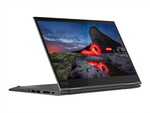Lenovo ThinkPad X1 Yoga 2020-20U9005NUS
Specifications

Price comparison
Average of 1 scores (from 2 reviews)
Reviews for the Lenovo ThinkPad X1 Yoga 2020-20U9005NUS
Source: Laptop Mag
 Archive.org version
Archive.org versionThe 5th Gen ThinkPad X1 Yoga is a conservative update to an already great business laptop. For now, that's OK. But in the future, it might not be. The competition is heating up with the likes of the HP Elite Dragonfly pushing the boundaries of design in the business segment. If it wasn't for outdated CPUs and an inflated price, the Elite Dragonfly would be neck-and-neck with the X1 Yoga as the top business 2-in-1 laptop.
Single Review, online available, Long, Date: 08/28/2020
Rating: Total score: 80%
Source: Laptop Mag
 Archive.org version
Archive.org versionWe loved what we saw of the ThinkPad X1 Yoga Gen 5 in person, from the sleek aluminum design to the superbright display. We're even more excited to put it to the test in our lab. Stay tuned to our upcoming full review and benchmarks later this year. For more news on laptops, tablets and more, check out our CES 2020 hub page.
Single Review, online available, Medium, Date: 01/05/2020
Comment
Intel UHD Graphics 620: Integrated GPU (GT2, 24 EUs) found on some Kaby-Lake-Refresh CPU models (15 W ULV series). Technically identical to the previous Kaby-Lake GPU called HD Graphics 620.
Modern games should be playable with these graphics cards at low settings and resolutions. Casual gamers may be happy with these cards.
» Further information can be found in our Comparison of Mobile Graphics Cards and the corresponding Benchmark List.
i5-10310U: Comet Lake based low power quad-core processor (technically identical to Whiskey Lake and still produced in 14nm++). The CPU cores can clock between 1.7 and 4.4 GHz with HyperThreading (8 threads). The integrated memory controller supports DDR4-2666 and using cTDP up/down the performance can be adjusted by the OEM (10 - 25 Watt possible, 15W default). Compared to the faster i5-10510U, the level 3 cache was reduced from 8 to 6 MB. The CPU supports the professional management features under the vPro umbrella.» Further information can be found in our Comparison of Mobile Processsors.



